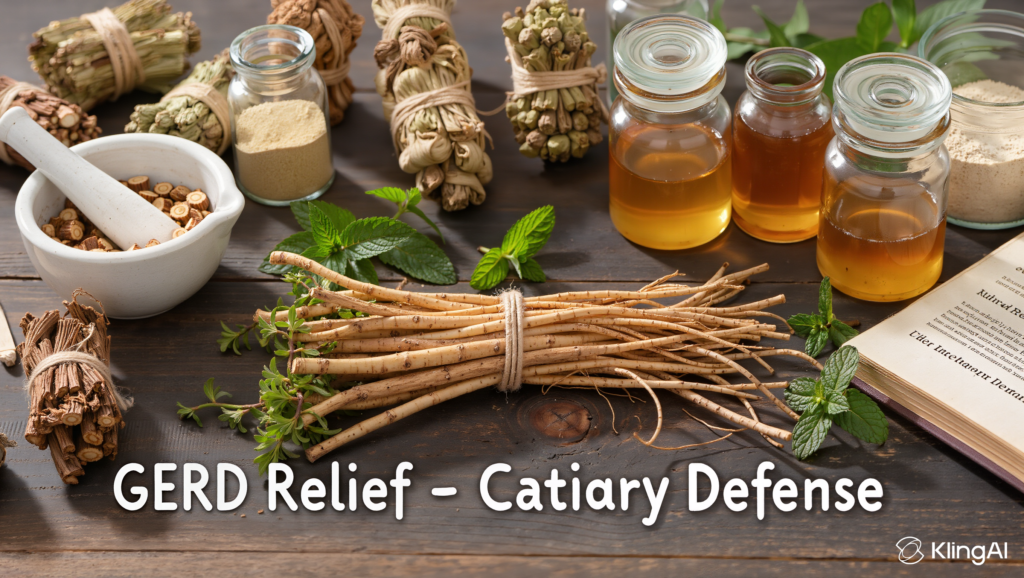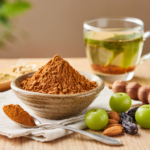Licorice root—a sweet staple in ancient medicine cabinets—is making a comeback as a natural powerhouse for healing ulcers, soothing GERD (gastroesophageal reflux disease), and even fighting cavities. But does the science stack up behind the hype? Ready for a gut-to-gums journey? Let’s dive deep into what research says, how to use it safely, and why licorice root belongs in your natural wellness toolkit.
Licorice Root: Healing Powerhouse from Gut to Gums
Licorice root (Glycyrrhiza glabra) has been used across cultures for centuries—soothing tummies in China, healing wounds in the Middle East, and fighting coughs in Europe. Modern scientists have zeroed in on dozens of active compounds (most notably glycyrrhizin and flavonoids) that deliver a spectrum of healing benefits. But what makes it so effective from the inside out?
Ulcer Healing: The Sweet Science
How Licorice Root Heals Ulcers
Stomach ulcers are notorious for being stubborn and painful. Licorice root not only coats and soothes the stomach lining but actively promotes healing through multiple mechanisms:
- Increases mucus production, creating a protective barrier against gastric acid
- Inhibits the growth of Helicobacter pylori, a primary ulcer-causing bacteria
- Reduces inflammation and free radical damage, speeding up repair processes.
A 2023 systematic review concludes the anti-ulcer effect is due to licorice’s ability to suppress stomach acid, enhance mucosal defenses, and speed up the production of protective mucus. Clinical studies even show that adding licorice extract to standard therapy improves H. pylori eradication and ulcer healing rates.
Deglycyrrhizinated Licorice (DGL): The Safer Choice
Heavy use of licorice root can cause issues with blood pressure, so most natural practitioners recommend deglycyrrhizinated licorice (DGL)—a version with glycyrrhizin removed. DGL retains all the gut-healing perks (mucosal protection, reduced acid, anti-bacterial action) without the risk of hypertension, making it the go-to formulation for stomach and esophageal use.
How Licorice Root Soothes GERD Naturally
GERD is more than simple heartburn—it’s chronic acid reflux that damages the esophagus over time. Standard meds like PPIs (proton pump inhibitors) only block acid production (and come with long-term risks), while licorice addresses the actual lining’s health.
Clinical Evidence
Multiple double-blind, placebo-controlled trials highlight DGL’s benefits for GERD: patients using DGL reported earlier symptom relief, improved quality of life, and sometimes a boost over prescription antacids. Mechanisms at play:
- Licorice boosts protective mucus so the esophagus can withstand acid
- Flavonoids and saponins in licorice reduce inflammation, calm irritation, and encourage tissue repair.
- Studies indicate improvements typically start within 1–2 weeks of consistent use, especially in combination with lifestyle changes
One standout 2025 clinical review summed it up: licorice’s mucosal-protective and anti-inflammatory effects, especially in DGL form, make it an ideal adjunct or alternative for chronic reflux sufferers.
Real-World Usage: Dosage & Form
DGL is typically chewed (not swallowed) before meals—chewing activates saliva to maximize mucosal benefits. Standard recommendations: 1–2 chewable tablets (typ. 400 mg each) 20 minutes before meals, up to three times daily. Always follow label directions or consult your healthcare provider, especially if taking other medications.
Gum and Oral Health: Nature’s Sweet Cavity Fighter
Let’s talk about a little-known benefit: licorice root’s power in oral health.
The Bacteria-Busting Secret
Recent research confirms two compounds in licorice root—licoricidin and licorisoflavan A—are powerfully antibacterial against the major bugs that cause cavities and gum disease. Clinical studies show that licorice-based mouthwashes, gels, or patches can significantly cut down bacterial counts in the mouth, speed up ulcer healing, and reduce gum inflammation.
- Licorice gels and hydrogels promote collagen deposition and blood vessel growth, expediting oral wound healing (think canker sores and mouth ulcers).
- Topical licorice patches were found to heal mouth ulcers faster and with less pain than standard treatments.
- Licorice mouthwashes (1–5% solutions) have been shown to be as effective as mainstream antiseptic rinses like chlorhexidine—without the harsh side effects.
These findings have huge implications for anyone prone to mouth ulcers, chronic gum disease, or just wanting an herbal alternative to harsh chemical rinses.
Cavity Prevention
Regular use of non-sweetened (not licorice candy!) licorice root chews, lozenges, or rinses can drop cavity-causing bacteria populations and lower your risk of tooth decay and periodontal disease. Some dental practices now recommend occasional licorice extract use as part of a holistic oral care plan.
How to Use Licorice Root: Practical Guide
For Ulcers and GERD
- Deglycyrrhizinated Licorice (DGL) Tablets: Chew 1–2 tablets (usually 380–400 mg) 20 minutes before meals, up to three times a day. This can be continued for several weeks, but always consult a professional for extended use.
- DGL Powder: Dissolve 1/2 teaspoon in water, swish, and swallow prior to eating.
- Licorice Tea (non-DGL): Brew 1–2 grams of dried root per cup of hot water, steep 5–10 minutes, and drink 1–2 cups daily. Not recommended for long-term use if you have high blood pressure or kidney disease (unless DGL).
For Gum & Oral Health
- Licorice Mouth Rinse: Mix 1–2 teaspoons of licorice powder in a cup of lukewarm water and swish for 1–2 minutes after brushing.
- Licorice Oral Gel/Patch: Apply directly to ulcers or gum inflammation for rapid healing and relief.
- Herbal Tooth Powder: Some holistic brands include licorice in their formulas to naturally combat oral bacteria and freshen breath.
For Canker Sores or Traumatic Ulcers
- Apply licorice gel or LHG (licorice-based hydrogel) to the sore 2–3 times daily, as shown in recent animal and human studies to speed healing, reduce redness, and decrease pain.
Safety & Dosage: What You Need To Know
While licorice root is generally safe short-term, it does come with an important caution: its natural glycyrrhizin can raise blood pressure, lower potassium, and interact with several medications. DGL is the safer version for most gut and oral issues, as the glycyrrhizin is removed.
- Children, pregnant people, and those on blood pressure or heart meds should use only DGL and always with professional guidance.
- Standard DGL doses: up to 1,200 mg/day for adults, generally well-tolerated for several months.
- Chronic or high-dose whole licorice root should be avoided unless prescribed by a specialist.
- Watch out for signs of high blood pressure, headache, or water retention if using glycyrrhizin-containing products long-term.
The Takeaway: Licorice for Gut and Gum Health—Rooted in Science
From gut to gums, modern research backs licorice root as an impressive natural ally for:
- Healing and preventing ulcers by boosting mucus and fighting H. pylori bacteria
- Soothing GERD symptoms by repairing esophageal lining and reducing irritation
- Speeding oral wound healing and busting bacteria that cause cavities and gum disease
Just remember to choose DGL for regular use, follow safe dosage guidelines, and incorporate licorice as part of a balanced health routine—alongside good oral hygiene and healthy eating habits.
Ready to add a little ancient wisdom to your wellness routine? Check with your dentist or doctor, grab a quality DGL supplement or licorice oral care product, and let this sweet root help heal from the inside out.
Did you find this article helpful? Support us by following us on our social media for more content on natural health and wellness:: Youtube, Instagram, Facebook, Pinterest, Twitter (X)
References








